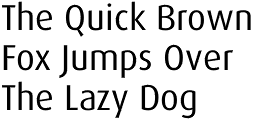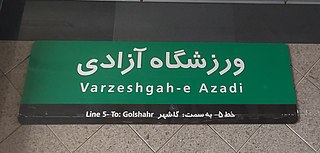English orthography is the writing system used to represent spoken English, allowing readers to connect the graphemes to sound and to meaning. It includes English's norms of spelling, hyphenation, capitalisation, word breaks, emphasis, and punctuation.
H, or h, is the eighth letter in the Latin alphabet, used in the modern English alphabet, including the alphabets of other western European languages and others worldwide. Its name in English is aitch, or regionally haitch.

The International Phonetic Alphabet (IPA) is an alphabetic system of phonetic notation based primarily on the Latin script. It was devised by the International Phonetic Association in the late 19th century as a standardized representation of speech sounds in written form. The IPA is used by lexicographers, foreign language students and teachers, linguists, speech–language pathologists, singers, actors, constructed language creators, and translators.
Y, or y, is the twenty-fifth and penultimate letter of the Latin alphabet, used in the modern English alphabet, the alphabets of other western European languages and others worldwide. According to some authorities, it is the sixth vowel letter of the English alphabet. In the English writing system, it mostly represents a vowel and seldom a consonant, and in other orthographies it may represent a vowel or a consonant. Its name in English is wye, plural wyes.
Finnish orthography is based on the Latin script, and uses an alphabet derived from the Swedish alphabet, officially comprising twenty-nine letters but also including two additional letters found in some loanwords. The Finnish orthography strives to represent all morphemes phonologically and, roughly speaking, the sound value of each letter tends to correspond with its value in the International Phonetic Alphabet (IPA) – although some discrepancies do exist.
The orthography of the Old Norse language was diverse, being written in both Runic and Latin alphabets, with many spelling conventions, variant letterforms, and unique letters and signs. In modern times, scholars established a standardized spelling for the language. When Old Norse names are used in texts in other languages, modifications to this spelling are often made. In particular, the names of Old Norse mythological figures often have several different spellings.
A phonemic orthography is an orthography in which the graphemes correspond to the language's phonemes. Natural languages rarely have perfectly phonemic orthographies; a high degree of grapheme–phoneme correspondence can be expected in orthographies based on alphabetic writing systems, but they differ in how complete this correspondence is. English orthography, for example, is alphabetic but highly nonphonemic; it was once mostly phonemic during the Middle English stage, when the modern spellings originated, but spoken English changed rapidly while the orthography was much more stable, resulting in the modern nonphonemic situation. On the contrary the Albanian, Serbian/Croatian/Bosnian/Montenegrin, Romanian, Italian, Turkish, Spanish, Finnish, Czech, Latvian, Esperanto, Korean and Swahili orthographic systems come much closer to being consistent phonemic representations.

The alphabet for Modern English is a Latin-script alphabet consisting of 26 letters, each having an upper- and lower-case form. The word alphabet is a compound of the first two letters of the Greek alphabet, alpha and beta. The alphabet originated around the 7th century to write Old English from Latin script. Since then, letters have been added or removed to give the current letters:

A digraph or digram is a pair of characters used in the orthography of a language to write either a single phoneme, or a sequence of phonemes that does not correspond to the normal values of the two characters combined.
The Greek alphabet has been used to write the Greek language since the late 9th or early 8th century BC. It is derived from the earlier Phoenician alphabet, and was the earliest known alphabetic script to have distinct letters for vowels as well as consonants. In Archaic and early Classical times, the Greek alphabet existed in many local variants, but, by the end of the 4th century BC, the Euclidean alphabet, with 24 letters, ordered from alpha to omega, had become standard and it is this version that is still used for Greek writing today.
In linguistics, vowel length is the perceived length of a vowel sound: the corresponding physical measurement is duration. In some languages vowel length is an important phonemic factor, meaning vowel length can change the meaning of the word, for example in Arabic, Estonian, Finnish, Fijian, Japanese, Kannada, Kyrgyz, Latin, Malayalam, Old English, Scottish Gaelic, Tamil and Vietnamese.

The Hebrew language uses the Hebrew alphabet with optional vowel diacritics. The romanization of Hebrew is the use of the Latin alphabet to transliterate Hebrew words.
In English orthography, many words feature a silent ⟨e⟩, most commonly at the end of a word or morpheme. Typically it represents a vowel sound that was formerly pronounced, but became silent in late Middle English or Early Modern English.
Ancient Greek phonology is the reconstructed phonology or pronunciation of Ancient Greek. This article mostly deals with the pronunciation of the standard Attic dialect of the fifth century BC, used by Plato and other Classical Greek writers, and touches on other dialects spoken at the same time or earlier. The pronunciation of Ancient Greek is not known from direct observation, but determined from other types of evidence. Some details regarding the pronunciation of Attic Greek and other Ancient Greek dialects are unknown, but it is generally agreed that Attic Greek had certain features not present in English or Modern Greek, such as a three-way distinction between voiced, voiceless, and aspirated stops ; a distinction between single and double consonants and short and long vowels in most positions in a word; and a word accent that involved pitch.
Modern Literal Taiwanese (MLT), also known as Modern Taiwanese Language (MTL), is an orthography in the Latin alphabet for Taiwanese based on the Taiwanese Modern Spelling System (TMSS). MLT is able to use the ASCII character set to indicate the proper variation of pitch without any subsidiary scripts or diacritic symbols.
The Romic Alphabet, sometimes known as the Romic Reform, is a phonetic alphabet proposed by Henry Sweet. It descends from Ellis's Palaeotype alphabet and English Phonotypic Alphabet, and is the direct ancestor of the International Phonetic Alphabet. In Romic every sound had a dedicated symbol, and every symbol represented a single sound. There were no capital letters; there were letters derived from small capitals, though these were distinct letters.

Romanization or Latinization of Persian is the representation of the Persian language with the Latin script. Several different romanization schemes exist, each with its own set of rules driven by its own set of ideological goals.

SoundSpel is a regular and mostly phonemic English-language spelling reform proposal. It uses a 26-letter alphabet that is fully compatible with QWERTY keyboards. Though SoundSpel was originally based on American English, it can represent dialectal pronunciation, including British English. With roots extending as far back as 1910 but largely complete by 1986, SoundSpel was developed "in response to the widely held conviction that English spelling is more complex than it needs to be." The American Literacy Council has endorsed the reform because anglophones can easily read it. Additionally, according to its proponents, "[SoundSpel] is fully compatible with traditional spelling and can be mixed with it in any proportion desired."
ISO 11940-2 is an ISO standard for a simplified transcription of the Thai language into Latin characters.
 u (as in h
u (as in h  us for house).
us for house). (as in ed
(as in ed  for age).
for age). eer for their).
eer for their). ɥi (as in distr
ɥi (as in distr  ɥi for destroy).
ɥi for destroy). r (as in f
r (as in f  rget for forget).
rget for forget).  (as in t
(as in t  it for cheat).
it for cheat). (as in mez
(as in mez  ɥr for measure).
ɥr for measure).






